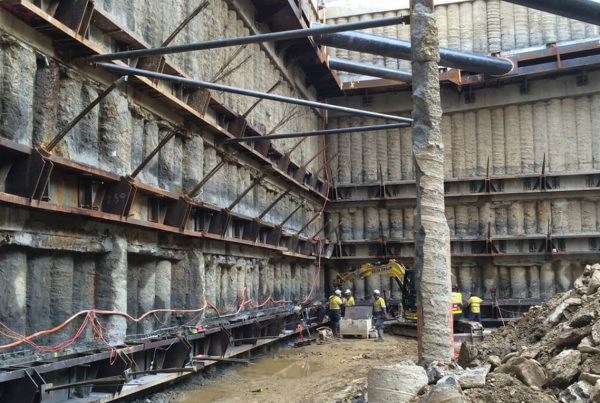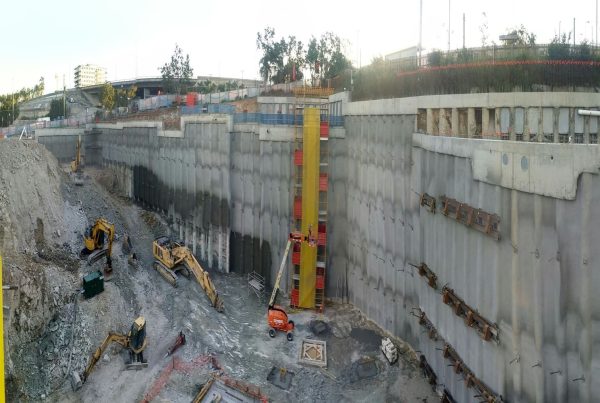Earth retention systems are a critical component of modern construction, designed to stabilize soil and provide support for structures during excavation or construction. These systems have evolved significantly over the years, offering alternatives to traditional methods such as sloped excavations and timber shoring. With the rapid pace of urbanization in regions like Congo, the need for efficient, safe, and cost-effective earth retention solutions has become paramount. This article provides a comparative analysis of modern earth retention systems and traditional methods, highlighting their applications, benefits, and limitations.
1. Overview of Earth Retention Systems
Modern earth retention systems include technologies such as sheet piling, contiguous pile walls, secant pile walls, soil nail walls, and anchored walls. These systems are engineered to provide stability in challenging conditions, such as deep excavations or urban environments with limited space.
Advantages:
- Versatility: Suitable for a variety of soil types and excavation depths.
- Safety: Enhanced stability reduces the risk of soil collapse.
- Durability: Materials like steel and reinforced concrete provide long-lasting support.
2. Overview of Traditional Methods
Traditional methods, such as sloped excavations and timber shoring, have been used for centuries to support earthworks. These methods rely on simpler techniques and materials, often making them more accessible in regions with limited resources.
Advantages:
- Cost-Effectiveness: Generally less expensive upfront compared to modern systems.
- Simplicity: Easier to implement in small-scale or temporary projects.
- Availability: Relies on readily available materials and labor.
3. Key Comparisons
3.1 Space Requirements
Modern earth retention systems are ideal for projects in urban areas like Congo’s growing cities, where space is limited. Traditional methods, such as sloped excavations, require more land and are often impractical in dense environments.
3.2 Structural Integrity
Modern systems offer superior structural integrity, especially in challenging conditions. For instance, sheet piling and soil nail walls can withstand higher loads and lateral pressures compared to timber shoring or unsupported slopes.
3.3 Environmental Impact
Modern systems often have a lower environmental impact due to precision installation and reduced excavation. Traditional methods can disturb more land and vegetation, which may not be suitable for environmentally sensitive areas in Congo.
3.4 Cost and Accessibility
While traditional methods are often more affordable initially, modern systems provide better long-term value due to their durability and reduced maintenance requirements. However, the higher upfront cost of modern systems can be a barrier in some regions.
4. Applications in Congo
In Congo, both modern and traditional methods have their place depending on the project’s scope and location. Urban infrastructure projects, such as retaining walls for highways or deep excavations for commercial buildings, benefit significantly from modern systems like contiguous pile walls or soil nail walls. On the other hand, smaller, rural projects may rely on traditional methods due to their cost and simplicity.
Conclusion
The choice between modern earth retention systems and traditional methods depends on factors such as project size, location, budget, and environmental considerations. In regions like Congo, where both urban development and rural construction coexist, adopting a balanced approach can optimize efficiency and sustainability. Modern systems offer superior safety, durability, and space efficiency, while traditional methods remain a viable option for smaller-scale or temporary projects. By carefully evaluating project needs and site conditions, construction professionals can select the most appropriate solution to ensure successful and sustainable outcomes.






